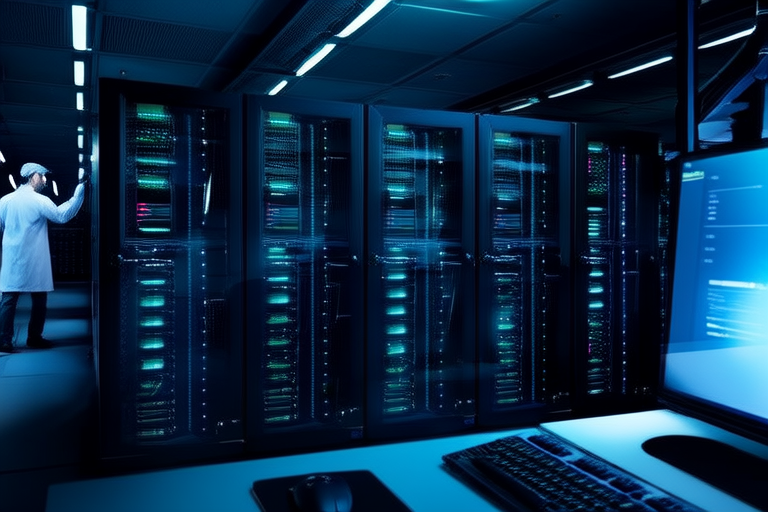“`html
Deep Dive into Deep Learning: Trends and Technologies Shaping the Future
Introduction
Deep learning, a subset of machine learning, has emerged as a pivotal technology in the modern technological landscape. It enables machines to learn from vast amounts of data, making them capable of performing complex tasks such as image recognition, speech processing, and natural language understanding. This article aims to provide a comprehensive overview of the current trends and emerging technologies in deep learning, highlighting their potential impact on various industries and the broader society.
In this article, we will explore the fundamental concepts of deep learning, examine the latest trends driving innovation, delve into cutting-edge technologies, address the challenges and limitations, and offer insights into the future outlook of this rapidly evolving field.
Understanding Deep Learning
Deep learning is a neural network-based approach that mimics the human brain’s structure and function. It involves multiple layers of interconnected nodes, each performing specific computations. These layers work together to extract features from raw data, enabling the system to make accurate predictions or classifications.
The history of deep learning dates back to the 1940s when Warren McCulloch and Walter Pitts proposed the first neural network model. Over the years, advancements in computing power, algorithmic improvements, and the availability of large datasets have propelled deep learning into the forefront of artificial intelligence. Today, deep learning is used across various domains, from healthcare to finance, and beyond.
Key components of deep learning include neural networks, layers, and activation functions. Neural networks consist of input, hidden, and output layers, each responsible for different stages of computation. Activation functions introduce non-linearity into the network, allowing it to learn complex patterns. Popular activation functions include ReLU, sigmoid, and tanh.
Current Trends in Deep Learning
Increased Adoption Across Industries
One of the most significant trends in deep learning is its widespread adoption across various industries. In healthcare, deep learning is revolutionizing medical imaging, drug discovery, and personalized medicine. Financial institutions are leveraging deep learning for fraud detection, risk assessment, and algorithmic trading. Manufacturing companies are using deep learning for predictive maintenance, quality control, and supply chain optimization.
Advancements in Natural Language Processing (NLP)
Natural language processing, a branch of deep learning, focuses on enabling machines to understand and generate human language. Recent advancements in NLP have led to the development of sophisticated language models like BERT, GPT-3, and T5. These models can perform a wide range of tasks, including translation, summarization, question answering, and sentiment analysis. As a result, NLP is transforming customer service, content creation, and information retrieval.
Integration with Other Technologies
Deep learning is increasingly being integrated with other technologies to create intelligent systems. For example, the combination of deep learning and Internet of Things (IoT) enables real-time monitoring and analysis of sensor data. Edge computing allows deep learning models to run on devices at the network edge, reducing latency and improving performance. Robotics, too, benefits from deep learning by enabling machines to perceive and interact with their environment more effectively.
Emerging Technologies
Transfer Learning
Transfer learning is a technique where a pre-trained model is fine-tuned for a specific task. This approach significantly reduces the amount of data and computational resources required for training. Transfer learning is particularly useful in scenarios where labeled data is scarce, such as medical imaging or rare disease diagnosis. By leveraging knowledge from similar tasks, transfer learning accelerates the development of specialized deep learning models.
Reinforcement Learning
Reinforcement learning is a type of deep learning that focuses on training agents to make sequential decisions in dynamic environments. It involves an agent interacting with an environment, receiving feedback in the form of rewards or penalties, and adjusting its behavior accordingly. Reinforcement learning has been successfully applied to game playing, autonomous vehicles, and robotic navigation. Its ability to optimize decision-making processes makes it a promising technology for enhancing automation and efficiency in various industries.
Generative Adversarial Networks (GANs)
Generative adversarial networks are a class of deep learning models that consist of two competing networks: a generator and a discriminator. The generator creates new data samples, while the discriminator evaluates their authenticity. Through this competitive process, both networks improve over time, leading to the generation of highly realistic images, videos, and audio. GANs have numerous applications, including image synthesis, data augmentation, and creative content generation.
Explainability and Interpretability
As deep learning models become more complex, ensuring their transparency and interpretability becomes crucial. Explainability and interpretability techniques help users understand the reasoning behind model predictions, enabling trust and effective deployment in critical applications. Methods such as saliency maps, feature attribution, and rule extraction are being developed to enhance the interpretability of deep learning models.
Challenges and Limitations
Data Privacy
Data privacy is a significant concern in deep learning, especially when dealing with sensitive information such as personal health records or financial transactions. Ensuring the confidentiality and integrity of data during training and inference is essential to protect individuals’ rights and comply with regulations like GDPR and HIPAA.
Bias in Algorithms
Bias in deep learning models can lead to unfair or discriminatory outcomes, particularly in applications related to hiring, lending, and law enforcement. Addressing bias requires careful consideration of data collection, preprocessing, and model evaluation. Techniques such as fairness-aware learning, debiasing methods, and diverse data representation are being explored to mitigate bias in deep learning models.
Computational Costs
Training deep learning models often requires substantial computational resources, including powerful GPUs and large-scale distributed systems. The high cost of computation poses a barrier to entry for many organizations, particularly those with limited budgets. Efforts are underway to develop more efficient algorithms, hardware accelerators, and cloud-based solutions to reduce computational costs and improve accessibility.
Future Outlook
The future of deep learning holds immense promise, with potential breakthroughs that could transform various sectors. In healthcare, deep learning may enable early disease detection, precision medicine, and remote patient monitoring. In climate science, deep learning could contribute to improved weather forecasting, carbon footprint reduction, and sustainable resource management. In education, personalized learning systems powered by deep learning could enhance student engagement and academic achievement.
Addressing global challenges such as climate change, healthcare, and education will require innovative solutions that leverage the capabilities of deep learning. By fostering collaboration between researchers, industry leaders, and policymakers, we can harness the full potential of deep learning to create a better future for all.
Conclusion
This article has provided a comprehensive overview of deep learning, exploring its fundamental concepts, current trends, emerging technologies, challenges, and future outlook. Deep learning has already made significant contributions to various fields, and its potential for future advancements is boundless. As we continue to push the boundaries of what is possible, deep learning will undoubtedly play a crucial role in shaping the future of technology and society.
We encourage readers to further explore the fascinating world of deep learning and engage with the ongoing developments in this exciting field. Together, we can unlock the full potential of deep learning and create a brighter, more intelligent future.
“`




